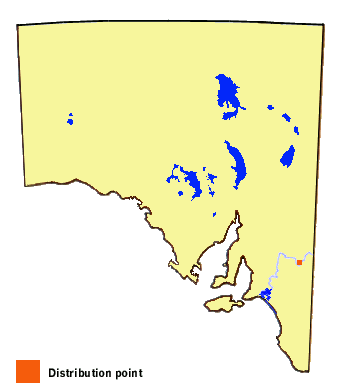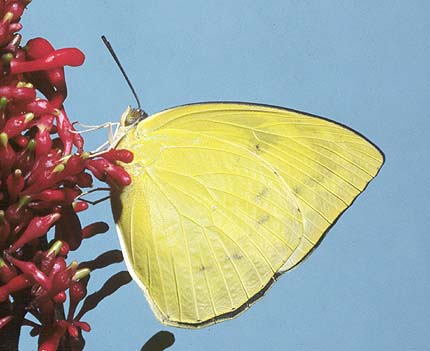Lemon Migrant
Catopsilia pomona pomona (Fabricius)

Interesting Aspects
Occurs as pale and dark forms, which differ mainly in that the dark forms are more yellow and in the females the width of the black colour along the wing margins is better developed, and there is sometimes a dark purple central blotch in the hindwing beneath in the pale female form. The chief distinguishing feature is that the dark forms have black antennae while the pale forms have pink antennae. Both forms fly together and are produced from the same batch of eggs. Breeding studies suggest that higher temperatures and longer day length may promote the dark form. Genetic dominance studies have not been undertaken.
Observations in the eastern states indicate that the early stages of the butterfly are unable to survive frosts or extended cold periods below 15 degrees C, and in tropical monsoon areas the butterfly is reproductively dormant during the dry season.

